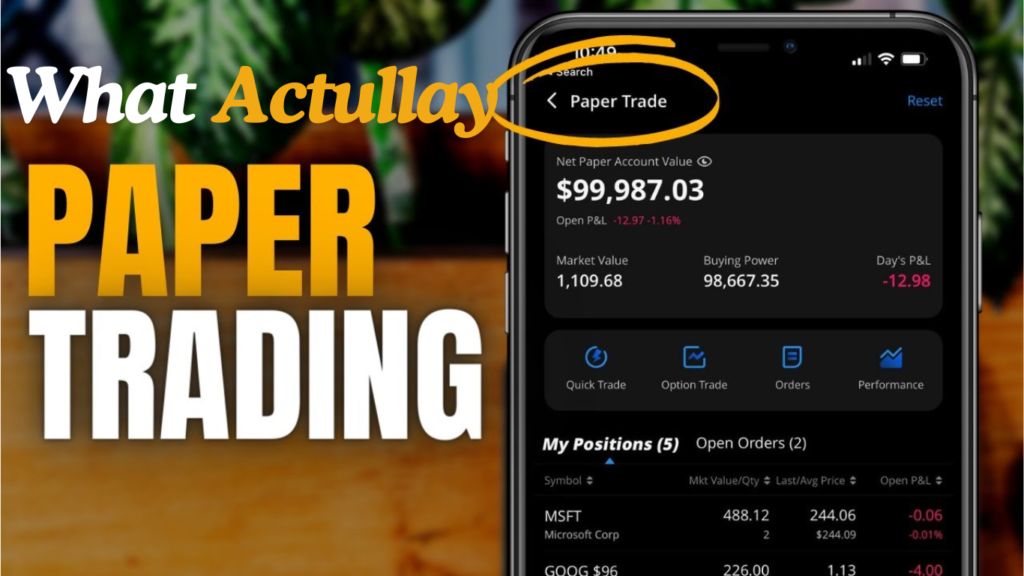What Are Gold BeES and How To Buy Gold BeES

What are Gold BeES and their working mechanism? And How to Buy Gold BeEs In India, gold has always been a secure investment. However, contemporary issues demand modern solutions. Introducing Gold BeES, a hassle-free way to invest in gold without the expenses and risks of physical ownership. This article is crucial as it provides comprehensive information about Gold BeES: their functioning mechanism, advantages, and disadvantages. Understanding these can lead to a more effective and secure diversification of your financial portfolio. Gold BeES offer a convenient and safe alternative to traditional gold investments. By eliminating the costs and risks associated with physical gold, they provide an efficient way to access the benefits of gold investment. What Are Gold BeES? Gold Benchmark Exchange Traded Schemes, or Gold BeES for short, are open-ended ETFs meant to mirror the price swings of real gold. Physical bullions of 99.5% purity support every unit of Gold BeES, equal 0.01 grams of dematerialized gold. The National Stock Exchange (NSE) and the Bombay Stock Exchange (BSE) allow one to buy and sell them at market rates. With Gold BeES, investors may conveniently monitor gold prices without having to deal with the hassle of actual storage. A clear and profitable investment choice, the value of Gold BeES changes with gold price. By investing in Gold BeES, investors can avoid the costs and risks of actual ownership while nevertheless benefiting from the stability and security usually linked with gold. How does Gold BeES work? Gold BeES can be purchased with a demat account; the minimal investment is the financial equivalent of around 0.01 grams of gold. Since physical gold is highly sought for, these exchange-traded funds (ETFs) feature clear pricing that matches the price per gram of real gold. This flexibility helps investors to easily enter or abandon positions as needed. Moreover, Gold BeES is dematerialized, so physical storage is not necessary anymore, which reduces the danger of theft and the associated costs of guarding real gold. Advantages of purchasing Gold BeES 1.Gold BeES give investors instant access to their money when needed. They can be readily traded at current market rates during trading sessions, which is especially helpful during periods of financial instability. 2.With no entrance or exit loads, brokerage fees for Gold BeES are less than those for actual gold investments. This cost effectiveness allows investors to direct more of their money straight to the investment itself, rather than to auxiliary expenses. 3.Gold BeES can be purchased and sold any time during trading hours. They are kept in a demat account, thereby eliminating storage and insurance expenses. This digital form of investing ensures that assets are immediately accessible and secure, reducing the risk of theft or loss. 4.Unlike gold bonds, which require a minimum purchase of 1 gram, investments in Gold BeES can begin with just 0.01 gram of gold. This accessibility allows a broader spectrum of investors, including those with lesser means, to participate in the gold market. 5.Using Gold BeES assets as collateral on stock exchanges provides investors with additional financial freedom. This feature allows investors to meet liquidity requirements or utilize their gold reserves for other investment opportunities. Drawbacks of Funding Gold BeES 1.Gold ETFs might not be as liquid as other financial assets like equities and bonds, so significant trades could find more difficulty. Gold BeES may nonetheless suffer in times of market stress or low trade volumes even if they provide more liquidity than real gold. 2.Price volatility of gold means that investment value may change greatly. Investors should be ready for any price swings and realize that the value of their investment can change depending on the state of the markets. 3.Market risk: Geopolitical and economic elements might affect gold prices, therefore compromising the value of investments. The price of gold can be influenced by changes in interest rates, inflation, foreign events, currency values, and so on, therefore influencing Gold BeES performance. 4.Market Inefficiencies: The gold ETF market could be less efficient than other financial markets, so complicating value assessment. Because of things like bid-ask spreads and market mood, investors could find it difficult to fairly evaluate the actual worth of their investment. 5.Investors rely on the ETF provider to properly fund and manage the underlying assets, therefore running counterparty risk—that is, possible default or mismanagement. To reduce this danger, investors must select respectable and recognized ETF providers. List of GOLD BeES Accessible in India Axis Gold ETF GOLD BEES from Nippon India ETF India Gold ETF via Invesco GOLD Exchange Traded Fund from UTI ETF Gold for IDBI Gold Exchange Traded Fund HDFC The Canara Robeco Gold ETF These ETFs give investors looking to get exposed to gold several choices. Before deciding which fund to use, investors should thoroughly review their possibilities since each one has distinct management techniques, fee ratios, and performance records. Gold BeES Taxation: Short term: gains are taxed according to the investor’s relevant tax band if held less than 36 months. Short-term capital gains (STCG) will be included into investor income and taxed accordingly. Long term: gains are taxed at 20% with indexation benefits if held for more than 36 months. Long-term capital gains (LTCG) let investors modify the purchase price for inflation, therefore adjusting the taxable gain and maybe lowering the total tax load. Post-April 2023: Independent of the holding duration, all gains are categorized as short-term and taxed based on the relevant tax bracket. Although this modification seeks to streamline Gold BeES’s taxation, long-term investors may pay more taxes. To know the particular effects of Gold BeES taxation according on their particular situation and the most recent tax rules, investors should speak with a tax professional. Investing in Gold BeES: Methods 1.Visit your selected broker’s website or app first. Investigate several brokers to choose one with reasonable rates, easy-to-use interface, and consistent client service. 2.Create a demat and trading account connecting your bank account in second step. Usually, this procedure calls for completing the required
What Is Net Paper Account Value On Webull?

What actually is Net Paper Account Value on Webull? Investing in the stock market may be a daunting experience, especially for those who are unfamiliar with its complexities and possible risks. Thank goodness, websites like Webull offer a solution with their paper trading accounts. With these accounts, individuals can trade virtual currency and have a risk-free environment to develop and improve their trading skills. This talk will cover a wide range of topics related to paper trading on Webull, including what net paper account value is, how it changes, and the many features and limitations that come with paper trading accounts. This compilation will enable the best possible paper trading experience on Webull, regardless of your level of experience with investing or whether you’re an experienced trader exploring new tactics. Deciphering Net Paper Account Value on Webull The net paper account value on Webull epitomizes the aggregate worth of your hypothetical investments within the paper trading account. This encompasses the cumulative sum of cash and the valuation of any equities or other securities you hold. Imagine it as the total value of your simulated portfolio. It functions like a virtual balance sheet, reflecting the performance of your investment’s sans real monetary involvement. Upon initializing a paper trading account on Webull, you are endowed with a predetermined quantum of virtual funds for trading purposes. This initial quantum constitutes your nascent net paper account value. As you execute trades, procure stocks, and witness market oscillations, this value will vacillate akin to a genuine trading account. This simulation imparts a realistic comprehension of the ramifications of your trading decisions on your overarching portfolio value. Why and How to Use a Paper Trading Account A paper trading account’s primary function is to be an educational tool. It makes it easier to simulate realistic trading situations without running the risk of real money loss. This renders it an exceptional medium for apprehending stock market mechanics, experimenting with varied strategies, and accruing trading confidence devoid of fiscal peril. For beginners, it stands as an indispensable resource for grasping trading fundamentals; for adept traders, it offers a sandbox to refine novel ideas and strategies sans monetary risk. Teaching Tool: A paper trading account provides novice investors with a hands-on way to learn about the stock market. It offers understanding of the workings of different order kinds, how market swings affect investments, and the experience of managing a portfolio. Refining Trading Strategies: Skilled traders frequently utilize paper trading accounts to evaluate and enhance novel trading approaches. Before using these tactics in the actual market, they might be adjusted after being observed in a risk-free setting. Boosting Confidence: Trading can be intimidating, particularly at first. A paper trading account aids in bolstering confidence in trading decisions, permitting mistakes and learning experiences without financial repercussions. Market Acclimatization: Markets are inherently volatile and unpredictable. Paper trading cultivates familiarity with market dynamics and elucidates the effects of economic indicators and news events on stock prices. To get more knowledge about activities regarding Finance then click here. Dynamics of Net Paper Account Value The net paper account value mirrors the fluctuations of a real trading account. It ascends when your investments appreciate or when you divest a security at a profit. Conversely, it descends if your investments depreciate or you sell at a deficit. It is susceptible to market movements and trading activities. For instance, procuring well-performing stocks elevates your net paper account value, whereas their devaluation diminishes it. Factors Influencing Net Paper Account Value: Market Movements: Stock prices oscillate in response to market conditions, economic news, corporate performance, and sundry factors, impacting the valuation of stocks in your paper trading account. Trading Decisions: Your trading maneuvers—buying and selling securities—directly affect the net paper account value. Profitable trades augment the account value, while unprofitable ones diminish it. Dividends: Stocks disbursing dividends will add these payments to your net paper account value, simulating actual dividend receipts. Fees and Commissions: Some paper trading accounts emulate the effect of trading fees and commissions, reducing your net paper account value akin to real accounts. Retractions: Your paper trading account does not allow you to take money out because it uses virtual currency. The main goal is to offer a risk-free trading environment with no actual financial consequences. Transfers: You cannot transfer your net paper account value to your real trading account. The funds and value within a paper trading account are entirely virtual and segregated from real money accounts, dedicated solely to practice. Real Money Trading: Paper trading accounts exclusively utilize virtual money. To engage in real money trading, a real trading account is requisite. Paper trading is confined to learning and practice. Negative Account Value: If your net paper account value turns negative, it signifies losses exceeding your initial virtual funds. This hypothetical situation functions as an educational tool by emphasizing the dangers of trading and the fallout from making hasty financial choices. Examine errors and adjust tactics to prevent the same problems in the future. Account Reset: On sites such as Webull, you have the option to reset your paper trading account. This enables a fresh start with a new virtual money balance, useful for experimenting with different strategies or recovering from significant losses. Performance Tracking: Platforms like Webull provide tools to monitor paper trading performance over time, aiding in the analysis of trades, profits, and losses. This facilitates the continuous refinement of trading strategies. Limitations: Despite its advantages, paper trading accounts have limitations. Emotional detachment, divergent market conditions, skewed risk perception, and hypothetical profits can impact decision-making and expectations. Recognizing these constraints is crucial for a balanced approach to learning and practice. Multiple Accounts: Opening multiple paper trading accounts is feasible, allowing the testing of diverse strategies or management of different virtual portfolios concurrently. This multiplicity aids in comparative analysis and strategy optimization. Cost-Free Usage: Paper trading accounts on
